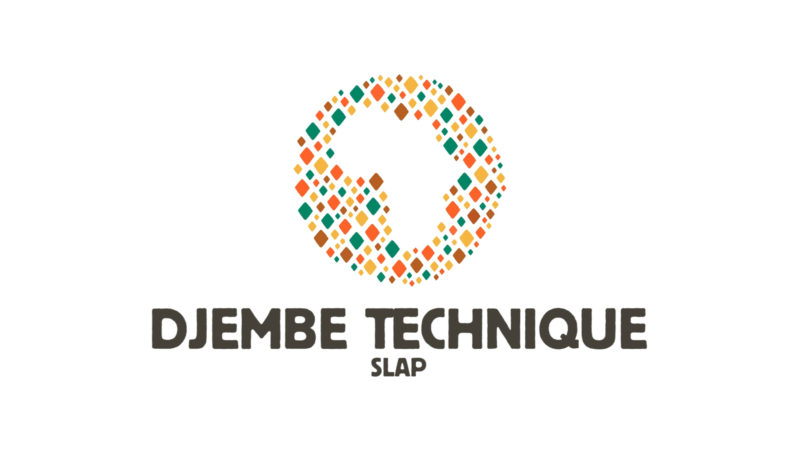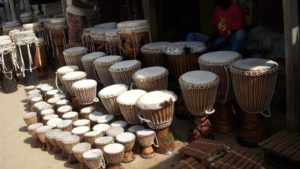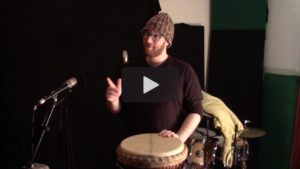Welcome to the African Drumming Online Blog!
In this post, we’re going to revisit our Slap Technique video, which is our beginner’s lesson for how to play a slap on djembe– you can find this video, along with the other technique videos, in the Technique > Djembe Technique section of African Drumming Online:
https://africandrummingonline.com/technique/djembe-technique/
We thought it would be a good idea to develop a blog series where we take some of our most popular free videos, and distill the info into text form as best we can. Different people learn in different ways, so we hope this helps some of you!
Not yet a member? You can sign up free to get access to this video, here:
https://africandrummingonline.com/
The slap is probably the most exciting, interesting, and elusive sound for new people learning how to play the djembe – it’s the high pitched ‘crack’ sound that is played on the edge of the djembe with your fingertips. There are lots of different approaches to getting the slap sound, and this is just one of them. This guide is to help your hands to learn how the sound comes out of the drum in the easiest way possible, so you have a starting point for then making your technique more efficient.
Assuming you’ve already watched the Tone technique video, or read the associated blog post, you should know about the ‘paddy’ bit between your palm and first knuckle – this is roughly where I tell students to aim for the edge of the drum when playing tones. When first learning how to play a slap on the djembe, I recommend students move their hand in towards the centre of the drum slightly, so the ‘paddy’ bit at the top of your palm is on the edge – like this:
 Or, to compare from above:
Or, to compare from above:

Another point of difference between the tone and slap, is the height and angle of your wrist – when playing the slap, you want your wrist to be angled so that, rather than your fingers being parallel with the drum head, they are angled upwards slightly. We’ll talk about that more in a minute.
Now you know roughly how you’re going hit the drum, let’s walk through the process of getting the sound.
First, your starting position should be the same as the tone – arm up and wrist bent back:

From there, your hand comes down so the paddy bit at the top of your palm hits the drum’s edge, as above. If we pause the movement here, you’ll see what I meant before about the angle of your wrist – you want a little bit of space between your fingertips and the drum head at the point the paddy bit hits the edge:

I recommend just practising this first part – lifting your hand back, then bringing it softly down so the paddy bit makes contact with the edge, and your fingers are angled above the skin. I think separating this movement, before trying to get the sound, can help your sound be better eventually, as it teaches your hand how to do the slight change in wrist angle.
This exercise is also important because it makes clear the way in which the slap sound comes about, and how it’s different from the tone. To simplify, what happens is that, just after your paddy bit hits the edge of the drum, your finger tips – previously hovering at an angle above the drum head – curl around and hit the drum. This happens automatically without you thinking about, or concentrating on, it. It’s a bit like slapping a ruler against a table – the ‘crack’ sound doesn’t come from the bit where you hit the edge, it comes from the rest bending around from the impact, slapping against the surface, and springing back.
The way to get this sound from the previous step, is to hit your paddy bit on the edge a bit harder (not too hard, you don’t want to hurt yourself), and relax your fingers enough so that the tips bounce against the skin of the drum, then bounce back to hovering above. It’s fast, but sort of looks like this:

Once you have that under control, you can try getting a slap sound – start with your hand up and wrist bent back, hit your paddy bit on the edge with your fingers angled above the head, let your fingers bounce down against the skin – that’s a slap!
Here’s the video showing how to get the sound up to here:
If you can get the sound doing that, the final step is to make sure you return your hand to the starting position – use the rebound force from the hit to pull your hand back to the start.
It’s a hard thing to explain – especially in text – so I recommend checking out the section of the video above if you’re having trouble. The key is to get a clear, consistent sound with both hands, and to also practise moving between tones and slaps so you don’t contort your hand into a weird shape to get the sound!
Finally, to cover singing the rhythms, I generally sing slaps as ‘Pa’ or ‘Ta’, but it changes…
The remainder of the video covers some finer points about the differences between tones and slaps, and how to further develop and clarify your sounds – if you can already get the slap, check it out, otherwise, just work on the basic sound for now!
The final thing I want to leave you with is the number one rule for people learning how to play slaps on the djembe – don’t just hit it harder! Doing this will hurt your hands – the slap is not achieved by hitting the drum harder, it’s through technique.
Hope that helps! If you have any questions, let me know!




